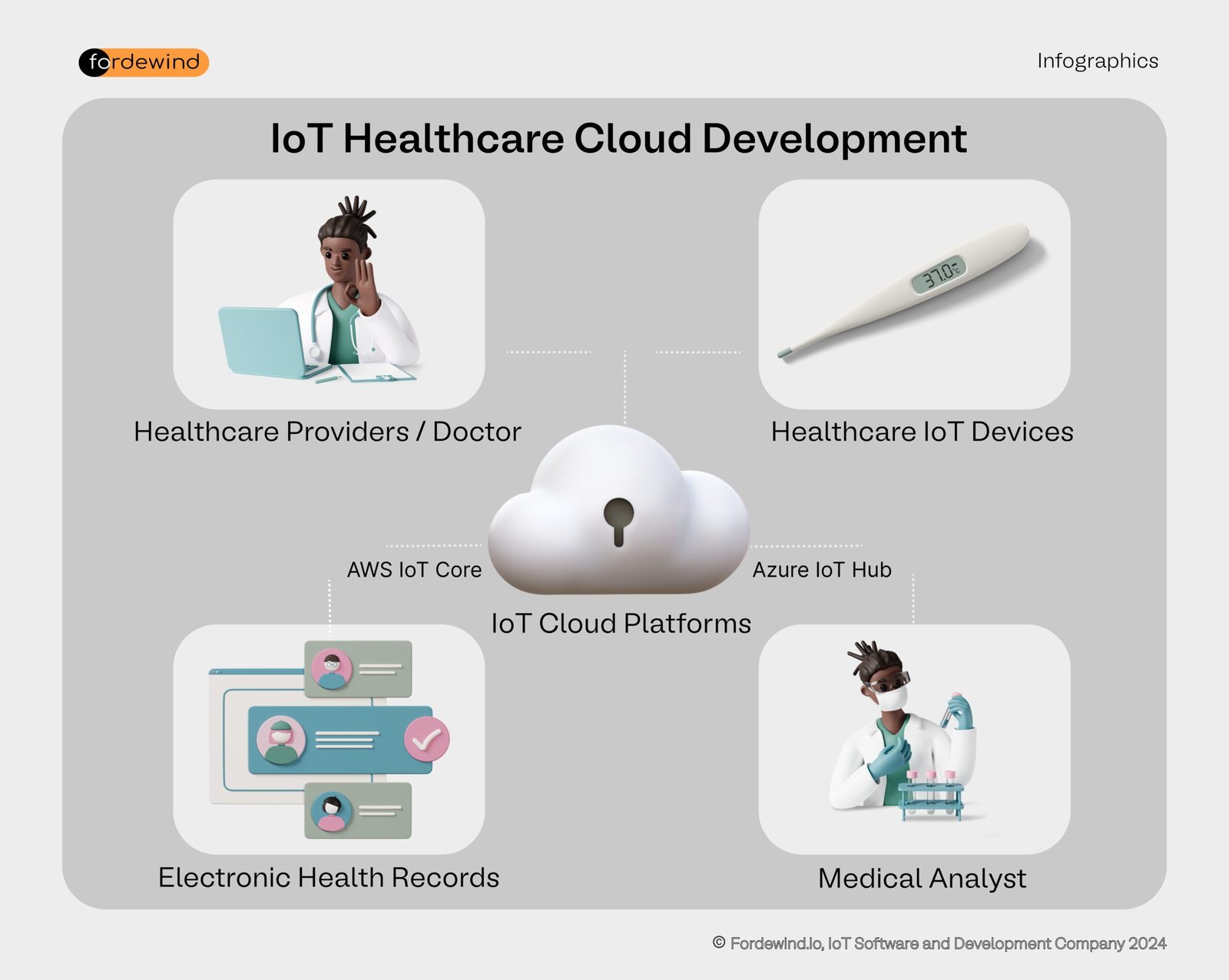IoT Cloud development for medical platforms

In recent years, the healthcare sector has experienced a significant surge in the integration of Internet of Things (IoT) technology, particularly within the realm of IoT cloud solutions for medical platforms. This advancement has offered a plethora of benefits, ranging from enhanced patient care to improved operational efficiency for healthcare providers.
At its essence, IoT cloud development for medical platforms revolves around the utilization of interconnected devices and sensors to gather invaluable data from patients and medical equipment. This data is securely transmitted to the cloud, where healthcare professionals can access and analyze it in real-time.
One of the primary advantages of implementing IoT cloud solutions in healthcare is the ability to remotely monitor patients. Wearable devices embedded with IoT technology can continuously track vital signs like heart rate, blood pressure, and temperature, transmitting this data to the cloud. Consequently, doctors can monitor patients’ health status remotely, facilitating early detection of potential health issues and reducing the need for frequent in-person visits, particularly beneficial for patients with chronic conditions or residing in remote areas.
Moreover, IoT cloud platforms streamline medical device management and maintenance. By connecting medical equipment to the cloud, healthcare providers can remotely monitor device performance, track usage patterns, and receive real-time alerts regarding malfunctions or maintenance requirements. This proactive approach minimizes downtime, ensuring critical equipment remains operational when needed most.

Another significant benefit of IoT cloud development in healthcare is its capacity to facilitate data-driven decision-making. By aggregating and analyzing large volumes of patient data from various sources, including IoT devices, electronic health records, and medical imaging systems, healthcare providers gain valuable insights into patient health trends, treatment outcomes, and resource utilization patterns. These insights inform more personalized and effective patient care strategies, optimizing resource allocation and operational workflows within healthcare facilities.
Furthermore, cloud technologies such as Amazon Web Services (AWS) and Microsoft Azure, alongside NoSQL databases like MongoDB, are pivotal in reshaping IoT solutions for medical applications. These cloud platforms provide robust infrastructure and services tailored to the unique requirements of healthcare IoT applications. AWS IoT Core and Azure IoT Hub offer managed cloud services for secure communication between IoT devices and the cloud, facilitating remote patient monitoring, medical device management, and data analytics.
NoSQL databases like MongoDB are gaining traction in healthcare due to their flexibility, scalability, and ability to handle diverse data types generated by IoT devices. MongoDB Atlas, a fully managed cloud database service, offers features like automatic scaling and data encryption, ideal for storing and analyzing large volumes of healthcare data in real-time.
In conclusion, the convergence of IoT technology, cloud platforms, and NoSQL databases holds immense potential for transforming healthcare delivery. By harnessing the scalability, flexibility, and advanced analytics capabilities of these technologies, healthcare providers can build agile, secure, and data-driven IoT solutions that enhance patient outcomes and drive operational efficiency across the healthcare continuum.